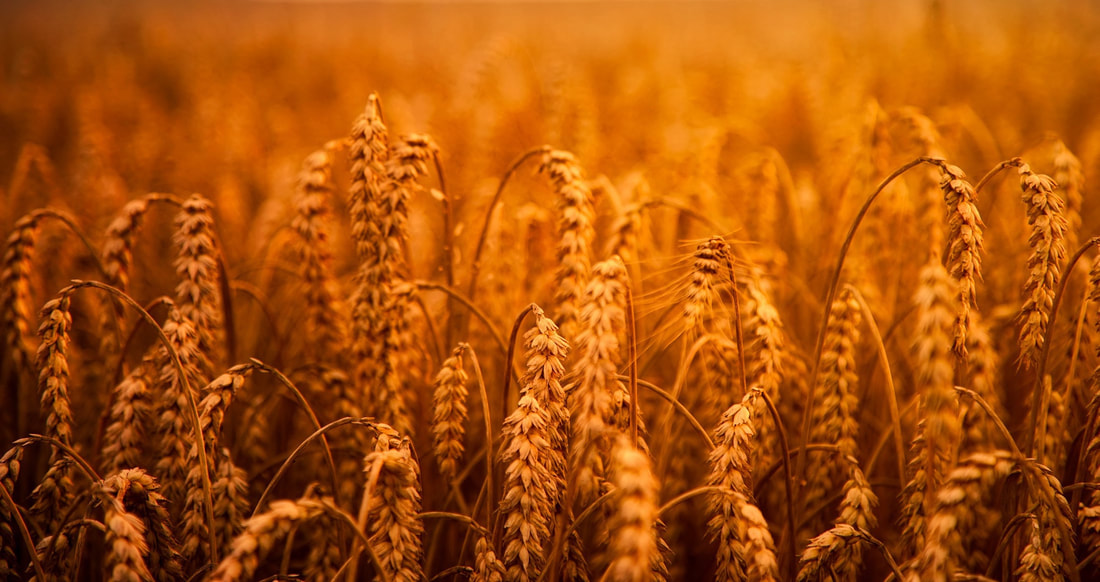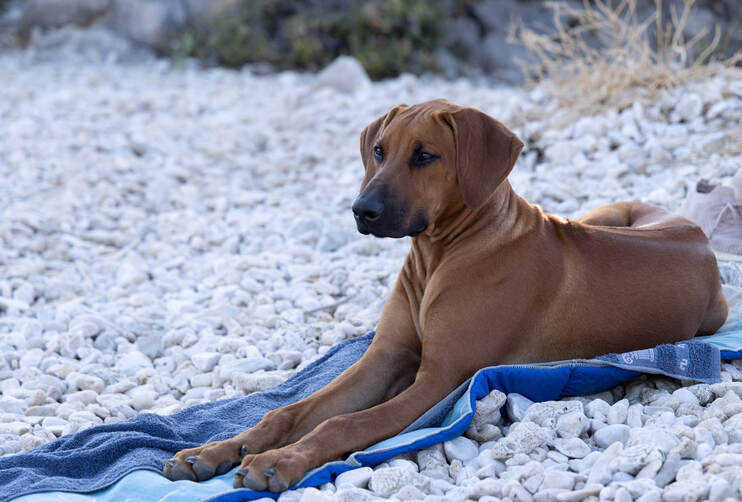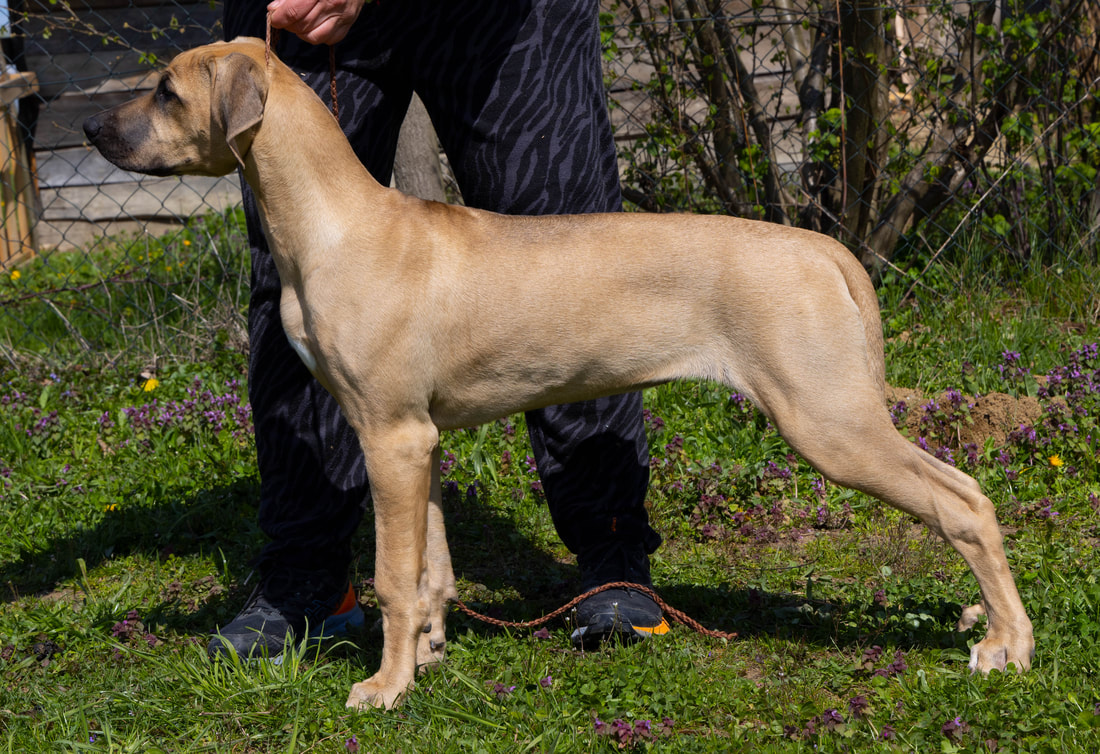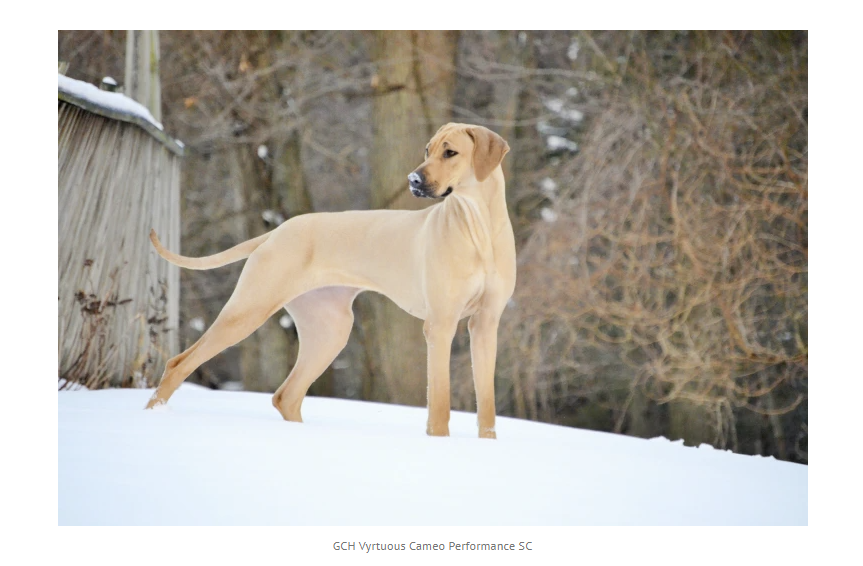|
Rhodesian ridgeback standard clearly says: Colour: Light wheaten to red wheaten Wheaten is derived from the noun that describes grains that have that specific color that is in the written standard of the breed, but if you ask us, this is also the colour of Africa. Savannah and desert shine in the same shades :). Denise Flaim, the breed specialist judge and journalist from the US described it really good: "Wheaten, which literally means the color of wheat, isn’t one flat, monochromatic color. If you look close up at a single Ridgeback hair, you will find that it’s actually banded, with light and dark shades ranging from a gold to a red. This variegation in the coat is what gives it “life.” Look at these beautuful wheaten landscapes...this is excatly the colour that our breed has. A Ridgeback should not look like it has been dipped in a bucket of paint. The color must not the same on all parts of the body. It is always bit lighter on the scapula part, on the neck and stomach as well on the the back of the legs and buttocks. This is probably why the word "wheaten" is chosen because it describes Ridgeback coat the best.
Denise said also: "Just as a wheat field may be many different colors, depending on the maturity of the crop, so too do Ridgeback coats vary. The lighter ones are a pale flaxen color, almost blonde, while on the other end of the spectrum dogs can be a rich reddish tone, though it should never appear muddy or mahogany, like that of an Irish Setter." Ridgebacks should not be too dark.
Dark red dogs are flashy an fashionable and in many parts of the world, even deep-red, mahogany or chocolate Ridgebacks which are even not in standard– have pushed out other wheaten shades. Allaround judges mostly always award darker dogs in front of light ones because they are not deep enough in the standard so they think Ridgeback should be dark, but the breed specialist judges are always happy to see different shades of wheaten colour in the dogshow ring. Light wheatens can still be found in Scandinavia, the United Kingdom and the United States but down in Europe there are few that we know and are imported from the USA. Hopefully in the future we will meet more "blondies" around, (MID) WHEATEN Our CIB MultiCh GCh BISS Mohaget's Major Maddox and his son Jamal Jambo Neomele are beautiful wheaten representatives of the breed RED WHEATENOur Jada Jambo Neomele and Ch Elvis Neomele have a red wheaten colour LIGHT WHEATENGCH VYRTUOUS CAMEO PERFORMANCE SC (USA) The most beautiful light-wheaten Ridgeback we have evers seen We are so happy that we will add to our wheaten spectre one beautiful light wheaten girl from the last Komainu litter and then we will have a nice range of wheaten colours in our kennel. Another light wheaten girl we have will also end up in breeding in other part of the Europe as she goes to the kennel, so we hope that the number of light wheaten dogs will start to rise and that the breed will be back on the track with its colours. What is interesting about our Komainu litter is that we have a huge spectrum of wheaten shades :) from light wheaten to the red wheaten ones. If you are not deep enough into the breed, you would probably say: " Wooooo wo woooo...wait a minute! In a previous text you wrote that Ridgebacks should not be too dark! What about that dark puppy on the left side of a photo?". Ridgeback puppies change coat colour while they grow. They start to change to a different color within a few short weeks after it's first day of birth. Although most of the change in color occurs within a few weeks, Ridgeback puppies will continue to change color all the way through puppy hood and adolescence, although to a much lesser, almost imperceptible degree. They eventually will settle into a their permanent coat color by the time they are about 6 to 7 months old. So if you love some special wheaten shade, while choosing a puppy, look at the colour of puppy's forehead or legs below elbows. The wheaten shade on these parts of body will be the shade that your dog will have as an adult! Good to know, ha?! :) KOMAINU litter So, it is important to understand that Ridgebacks should not be very dark.
It should not be mahogany or chocolate. These colours are not in Ridgeback standard. Ridgebacks are "wheaten" in all shades from light-wheaten over (mid)-wheaten to the red-wheaten colour and we love them all.
0 Comments
The ridge is most well-known feature of our loving breed. That line of hair, running in reverse, really makes this breed stand out in a crowd. It is a unique trait and it makes our dog so special. Why do Rhodesian Ridgebacks have ridges? Historic data on the Rhodesian Ridgeback shows that centuries and centuries before the Rhodesian Ridgeback was developed a similar breed was found in Africa. One that was depicted in the burial caves as a showing of a chiefs prized possessions. This dog, which was shown alongside sheep and cattle was distinctive in that it had a ridge down its back. By the 16th century, this breed was commonly known as the Hottentot dog and often found living with the Khoikhoi tribe in Rhodesia, now Zimbabwe. It was a half-wild African dog with a ‘ridge’ as its most prominent feature. The history of the breed and how Rhodesians their current look, find out on our website under "History of the breed" For those now wondering where the Hottentot dog got its ridge, unfortunately, we have no idea. It could, however, just be an act of Mother Nature, or perhaps a gift from God. After all, there is a legend, and one that says the ridge is “where God sews them up (Rhodesian Ridgebacks) when he’s done stuffing them.” The breed standard calls for the ridge to be clearly defined, symmetrical, and made of hairs growing in the opposite direction compared to the rest of the coat. It should start behind the shoulders and taper off to a point as it reaches the hip area. The ridge should also have two crowns or whorls which are directly opposite each other. Having only one or more than two is considered a serious breed fault. A whorl, on a Rhodesian Ridgeback, should be a pattern of spirals or concentric circles in the fur. It should be noted at this point that there is no reason why you should not have a Rhodesian Ridgeback with less than two whorls, or more than two whorls as a family pet. Unless you are showing them, the whorls are of little to no importance and do not affect the Rhodesian Ridgeback in anything other than appearance. How The Ridge Is Passed On? In order for Rhodesian Ridgeback puppies to be born with a ridge, they need to have the ‘ridge gene’ passed down from their parents to them. Rhodesian Ridgebacks can possess one or two copies of this gene. Rhodesian Ridgebacks that carry two copies are known as homozygous, whilst those who carry the one are heterozygous. Rhodesian Ridgebacks that carry two copies of the ‘ridge gene’ will always produce puppies with ridges. They, however, will not necessarily always pass both copies of the ‘ridge gene’ to their puppies. Rather, there is a 50% chance that they will pass just one on. The only way to tell whether a Rhodesian Ridgeback has been born with just one or two ‘ridge genes’ is to have a genetic marker test done. Rhodesian Ridgebacks born with just one ‘ridge gene’ can but do not always pass this on.
This is not a problem if they are bred with a Rhodesian Ridgeback with two ‘ridge genes’ as one of those will definitely be passed on. If both parents only have one ‘ridge gene’ there are several different outcomes. These are: 1 Puppies who have two ‘ridge genes’ (one from each parent) and can definitely themselves pass the ridge on. 2 Puppies with a 50% chance of having a ridge, but only receiving one ‘ridge gene.’ 3 Puppies with a 25% chance of having no ridge at all. These puppies have no ‘ridge gene’ and cannot produce puppies themselves with ridges. Please note, Rhodesian Ridgebacks are born with their ridges so do not trust a breeder who say that they will grow later. |
AuthorMaja Kljaić Archives
February 2023
Categories
All
|
|
UZGAJIVAČNICA RODEZIJSKIH RIĐBEKA
RHODESIAN RIDGEBACK KENNEL NEOMELE ul.1.maja 70 Reka, 48 000 Koprivnica CROATIA |
ⓒ 2024 NEOMELE - RHODESIAN RIDGEBACKS
All content and data on this website is protected by copyright.
No part of this website may be used, reproduced or utilized in any form or by any means, electronic or mechanical, without permission in writing from
Neomele kennel/Maja Kljaic & Lela Trescec.
All content and data on this website is protected by copyright.
No part of this website may be used, reproduced or utilized in any form or by any means, electronic or mechanical, without permission in writing from
Neomele kennel/Maja Kljaic & Lela Trescec.



































